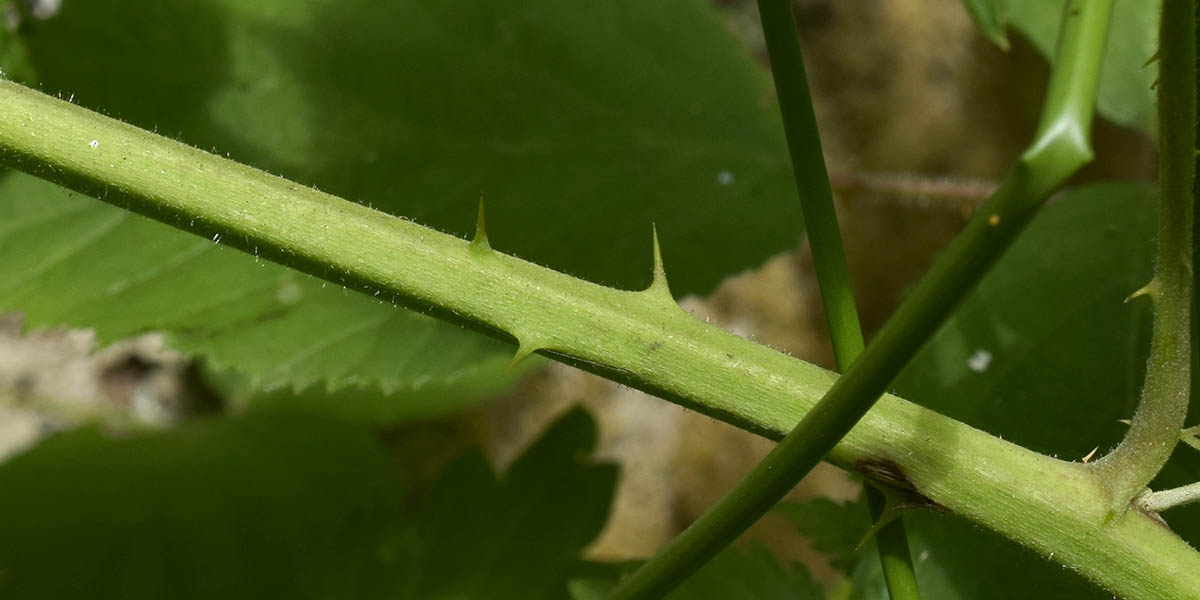
Rubus phaeocarpus – Series Hystrices
back to Alphabetical index · Taxonomic index
This bramble is widely distributed and locally abundant in many woods in south-east England and also occurs in northern France. It forms large, dense, tall patches and is reasonably distinctive due to its pale pink flowers and stoutly branched inflorescences. However, poorly grown specimens can be puzzling. Sometimes it is not obvious that it is a member of the Hystrices, as glands and pricklets are sometimes sparse on the stems.
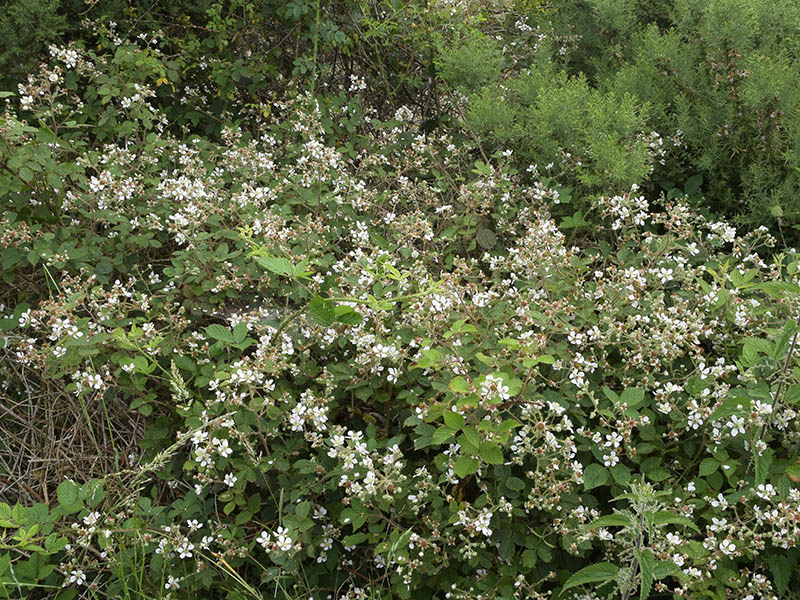
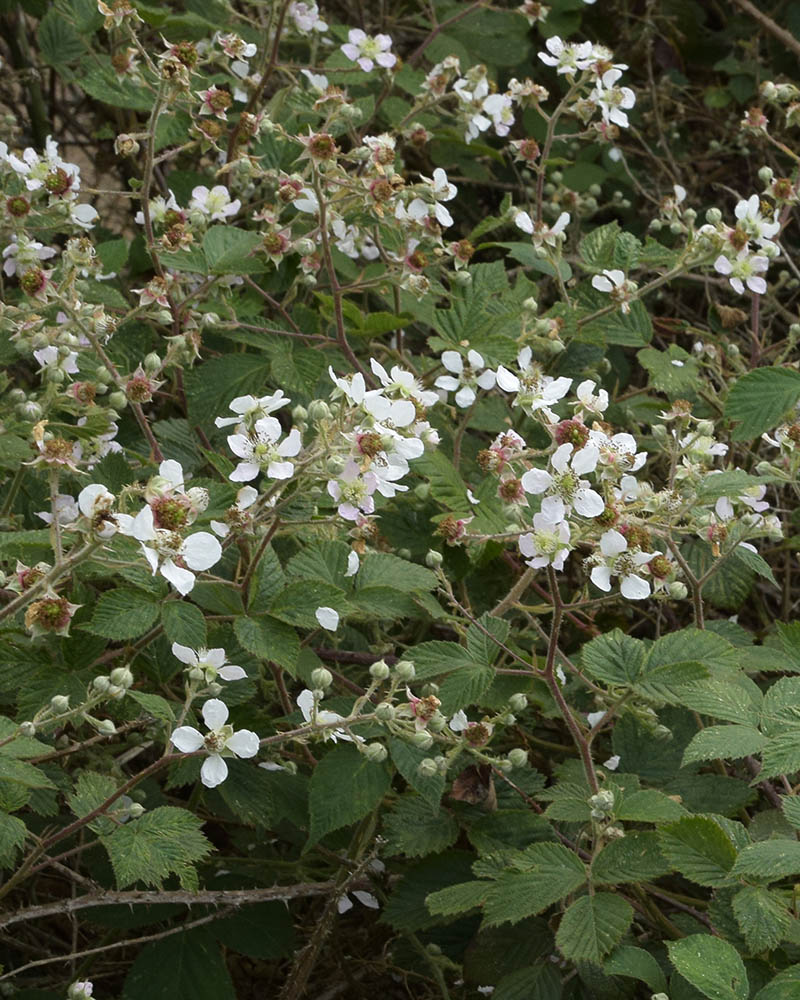
In well grown examples the panicles are large and many-flowered with a broad, non-leafy flat-topped head. There are numerous stout, patent branches, which are are thickly pubescent with numerous short-stalked glands hidden in the hairs and frequent small, fine prickles.
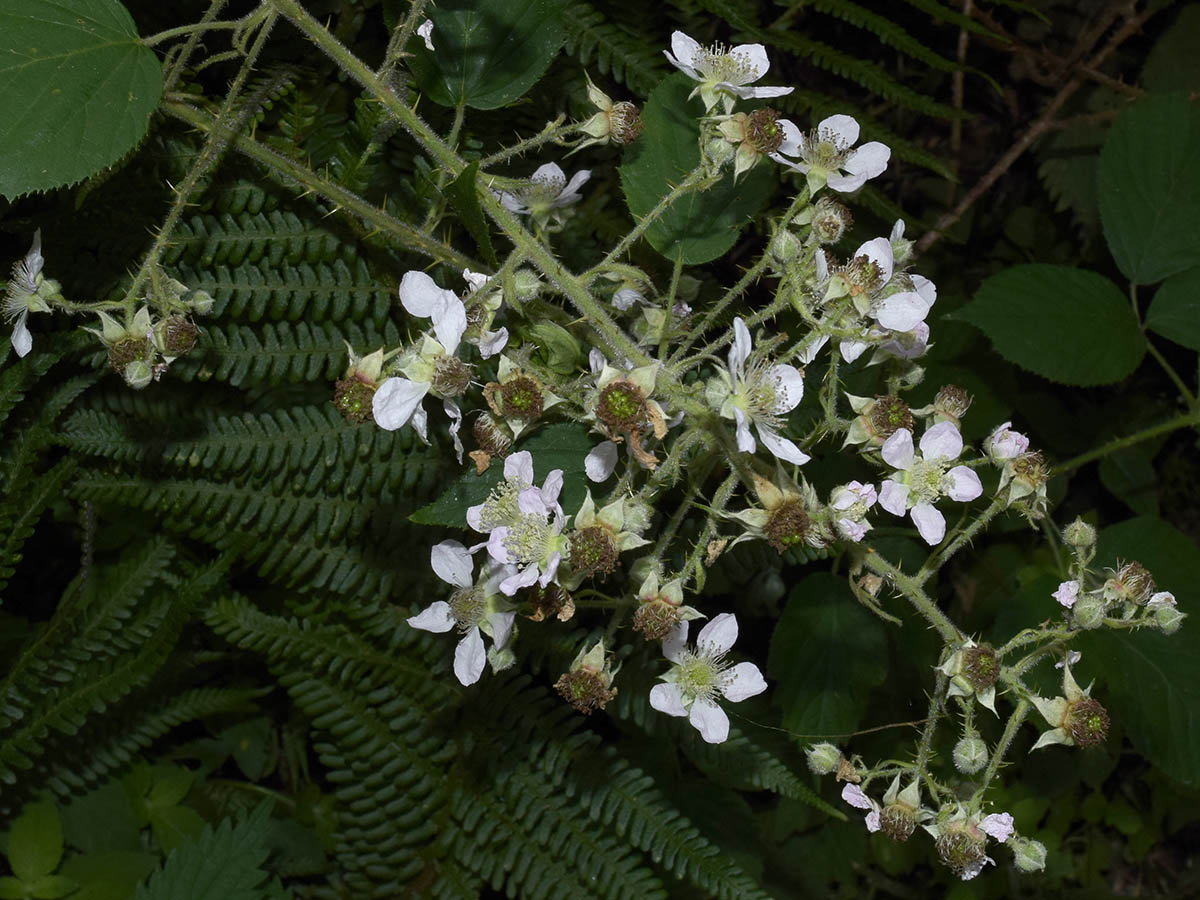
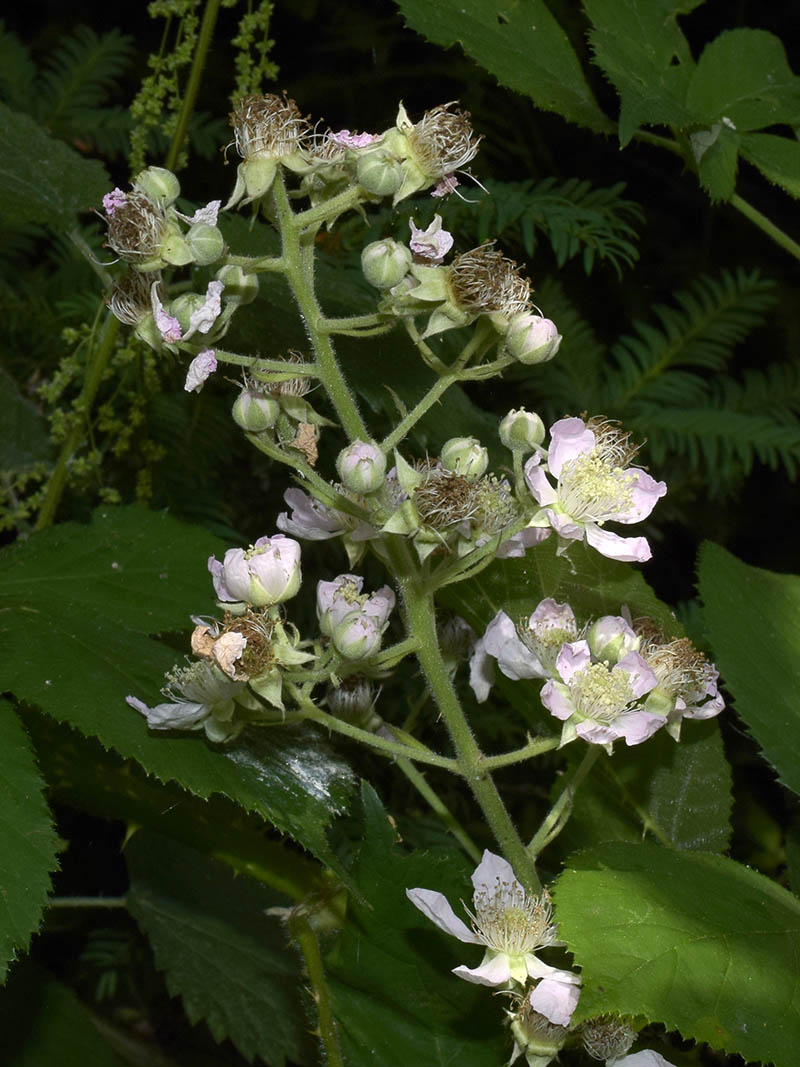
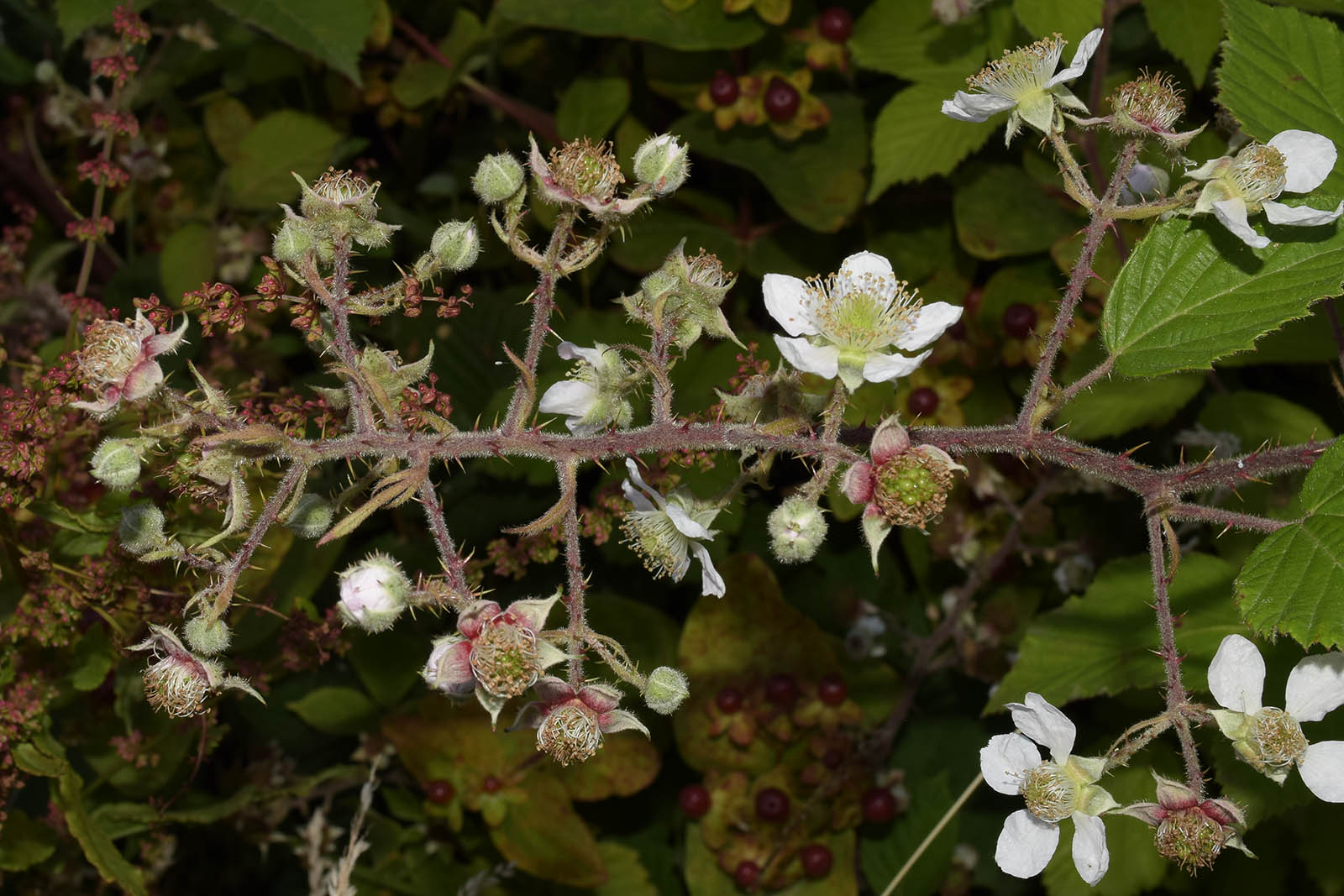
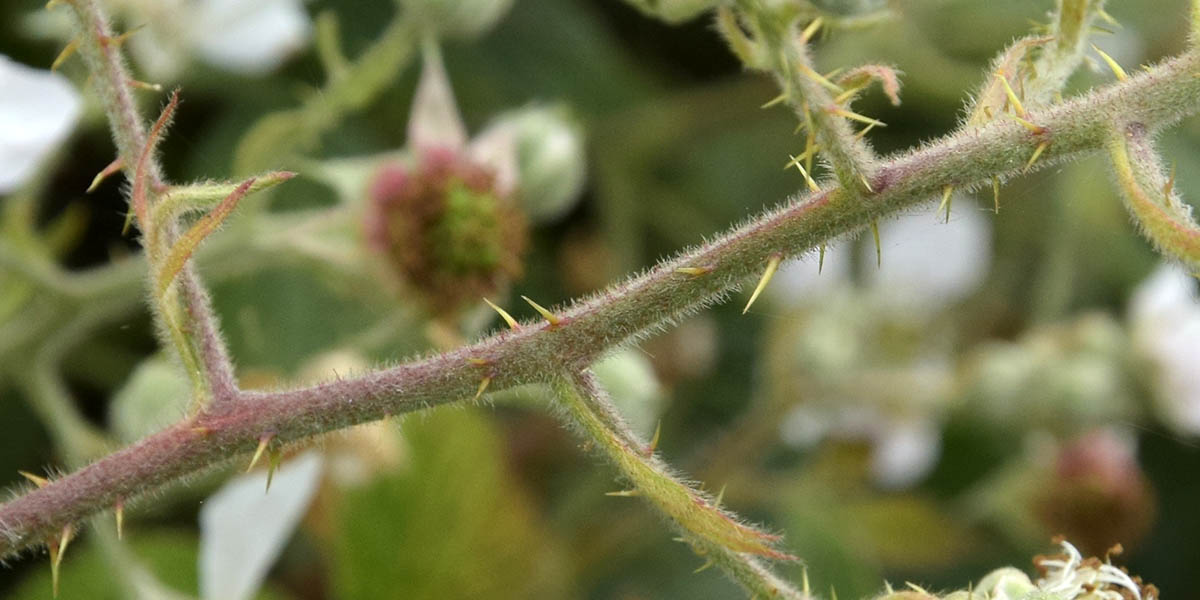
Flowers are small to medium-sized, c.2-2.5cm diameter. Petals are pale pink (sometimes appearing white but always pale pink in bud), broadly elliptical to almost round, varying in size from c.7-10 x 10-17 mm . The styles are pale green and the stamens are usually a little longer than the top of the styles when the flower is viewed side on (when viewed from above they look relatively long). Carpels and receptacle are thinly hairy.
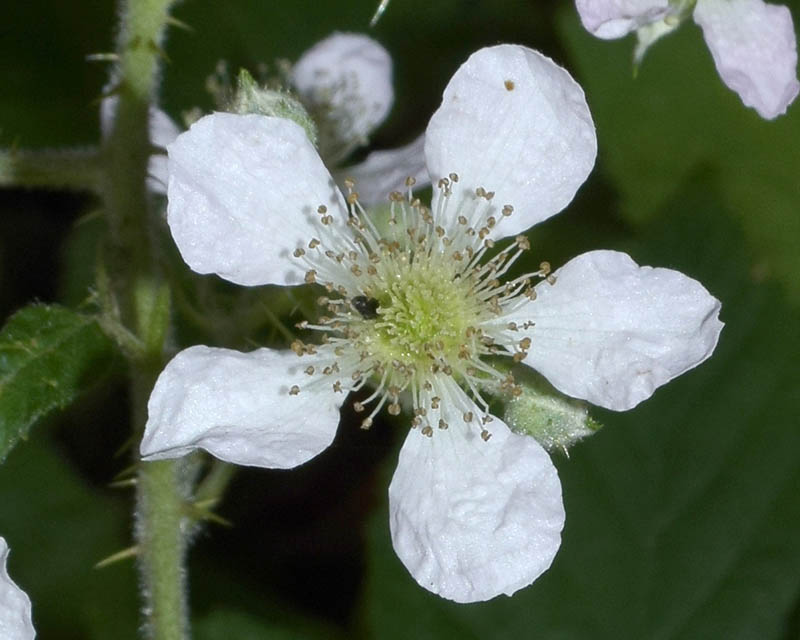
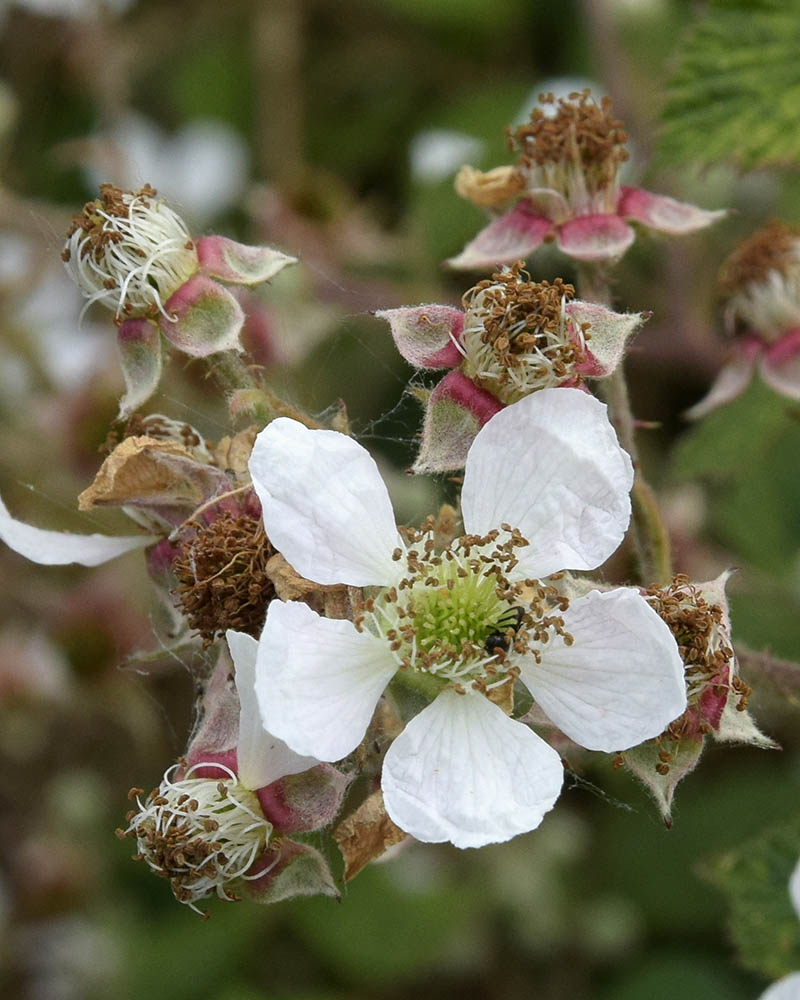
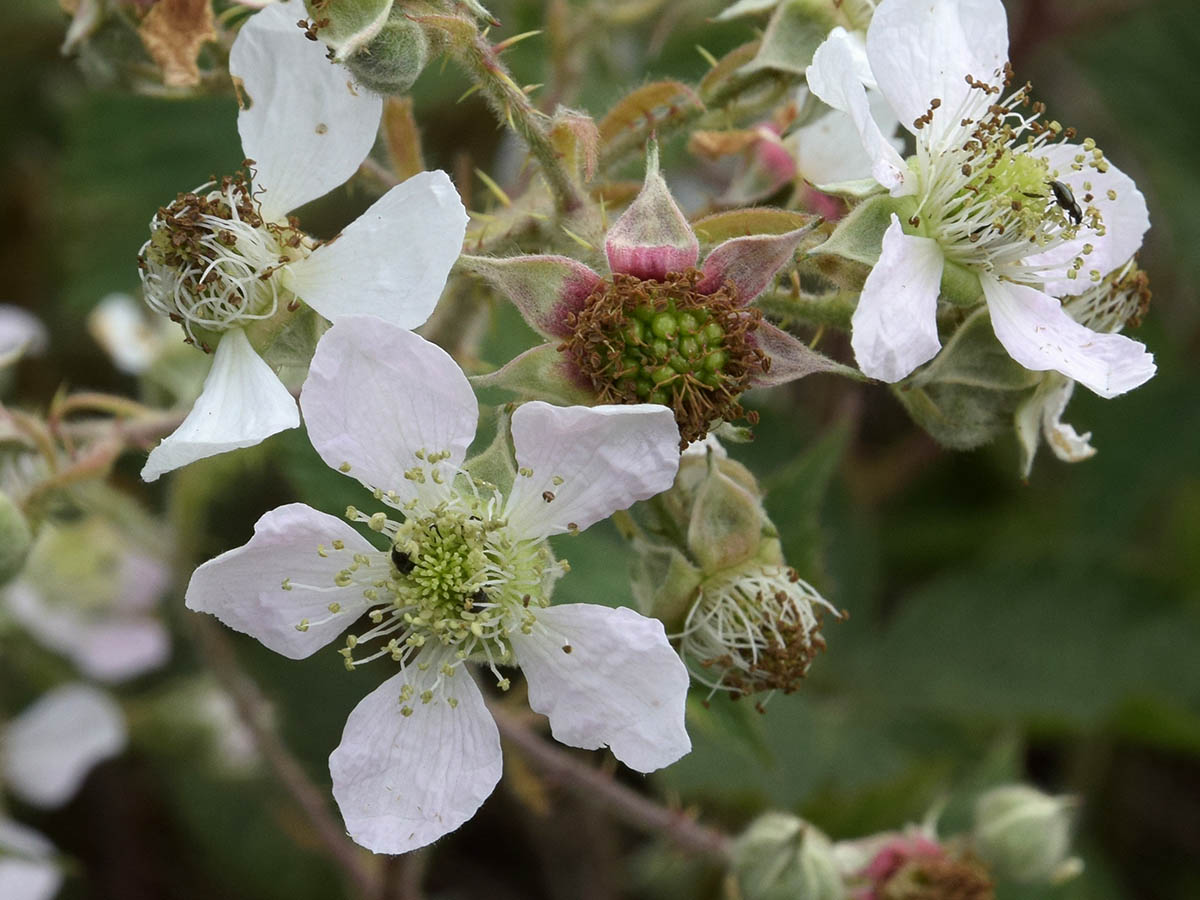
Sepals are pubescent with inconspicuous short-stalked glands and scattered acicles. They can be short or long-pointed (with narrow leafy points) and tend to be patent and somewhat curled up at the tips when the petals drop; also often turning red at the base within.
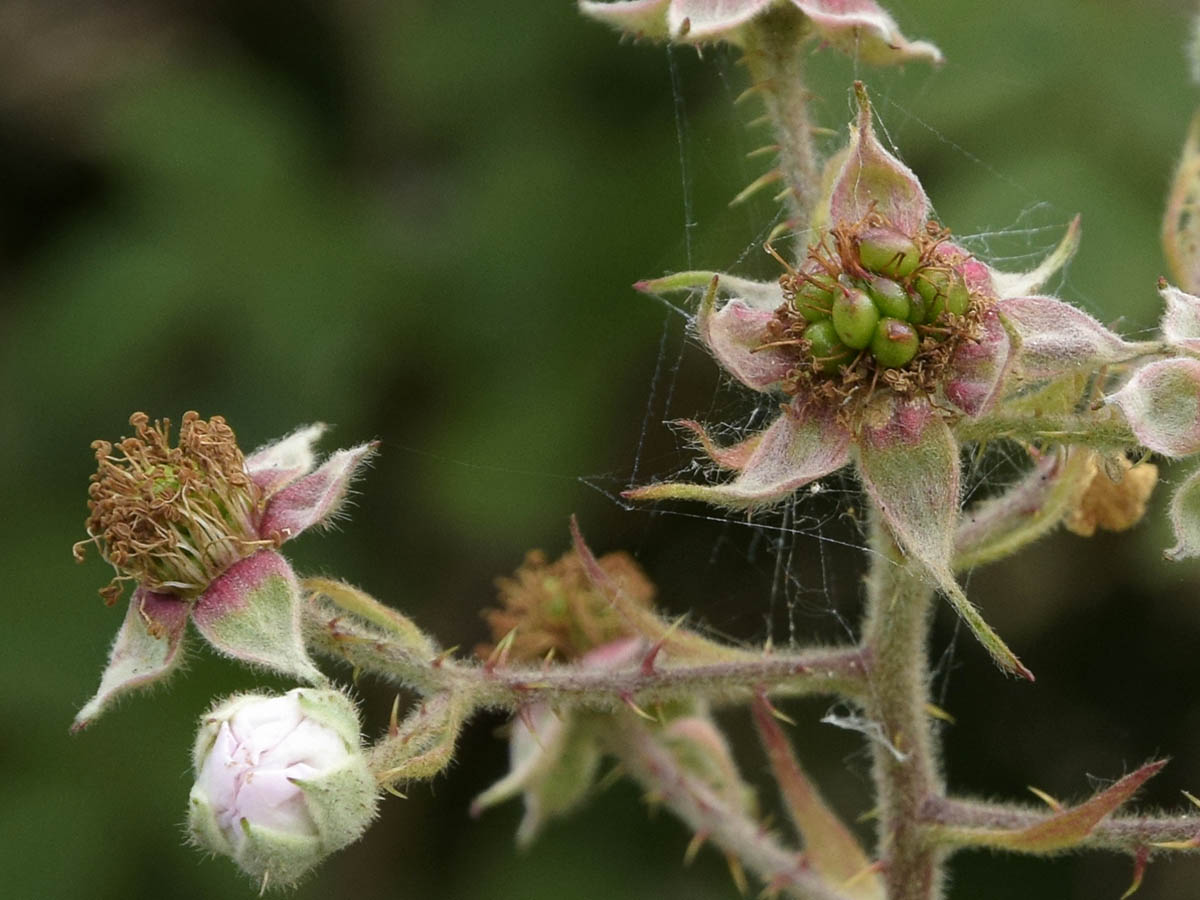
Leaves are mid to dark green above with five or sometimes three leaflets. The terminal leaflet can vary from elliptical to slightly obovate in shape and also in its relative width (6-9 x 4-7 cm), and is usually flat. It has a long cuspidate apex and an entire to emarginate or sub-cordate base. A useful feature is the relatively long petiolule, which is often at least half the total length of the leaflet. The toothing is shallowly serrate, but the main teeth are often prominent. Leaflets are glabrous or sparsely hairy above.

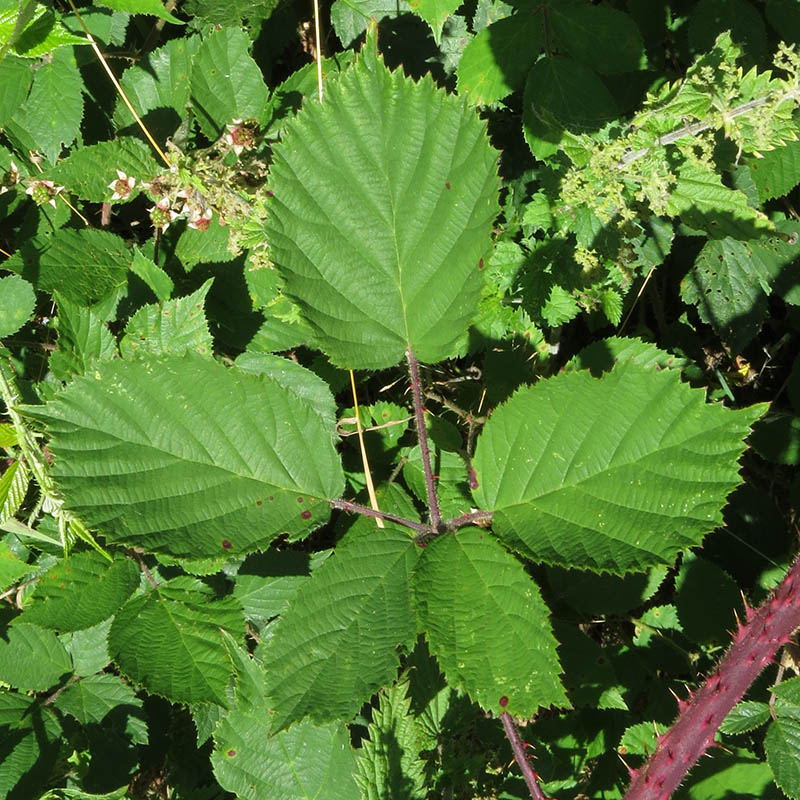

Leaflets vary from softly hairy to grey-felted below.
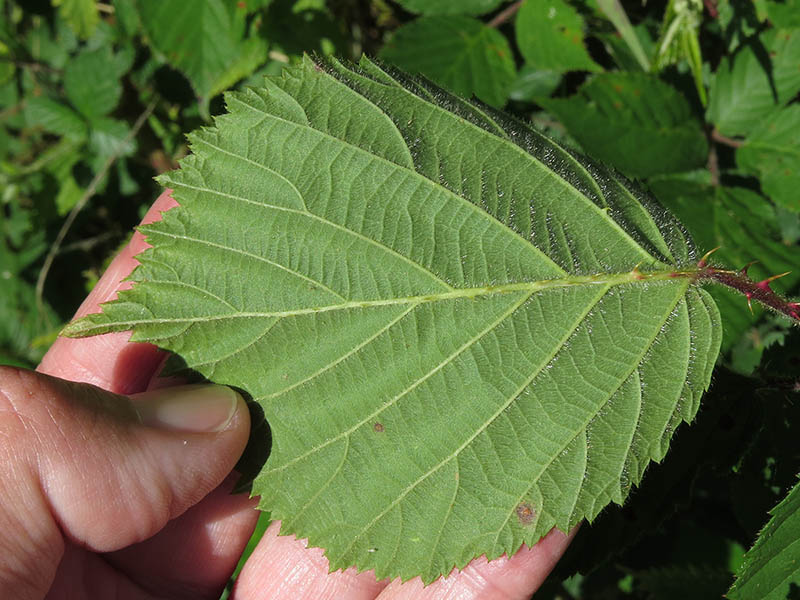
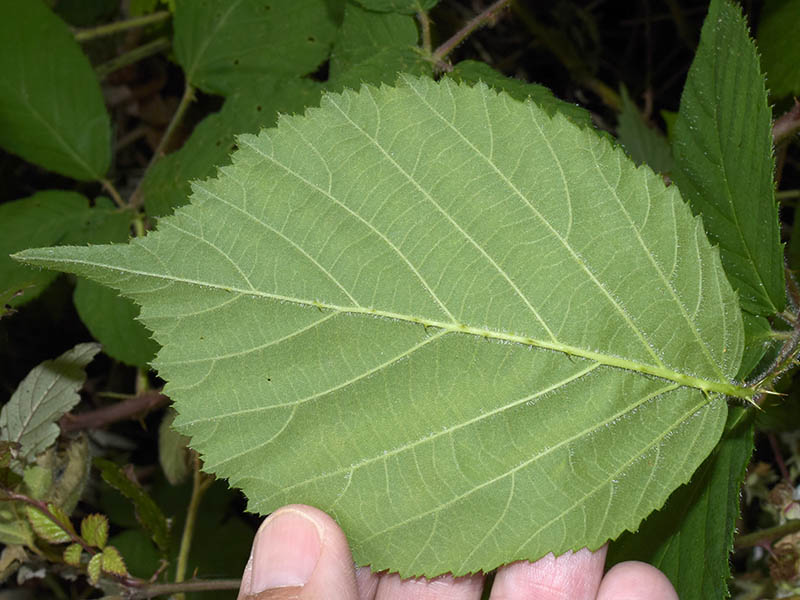
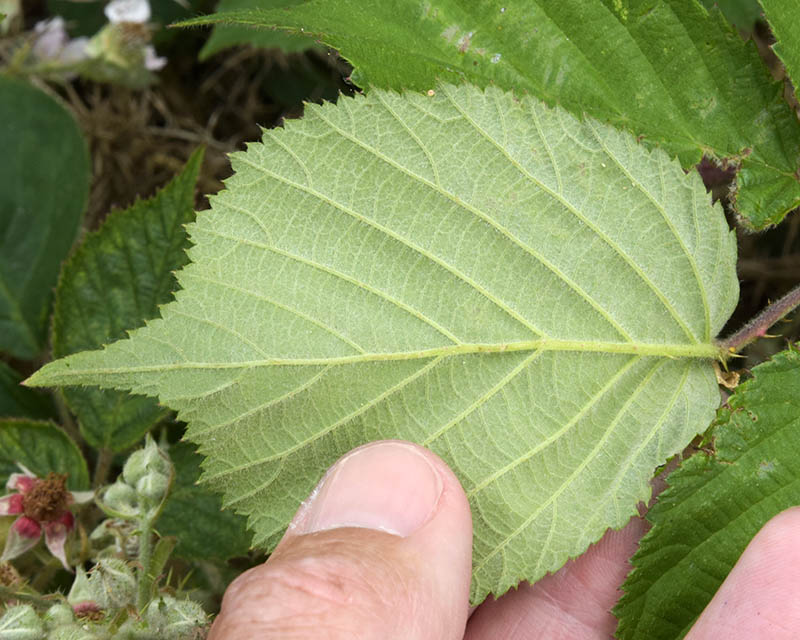
The first-year stem is moderately hairy and typically has numerous strong prickles, many of which are usually almost patent and as long as or longer than the diameter of the stem. Others may be slightly declining or occasionally curved. There is usually a mixture of these longer prickles on the angles and shorter ones together with very small pricklets on the faces, but the armature of this species is quite variable, dependent on the amount of shade or exposure. Short-stalked and very short-stalked glands can be sparse to numerous. Stems may be green in the shade, brownish or dark reddish purple. Older stems become slightly furrowed.
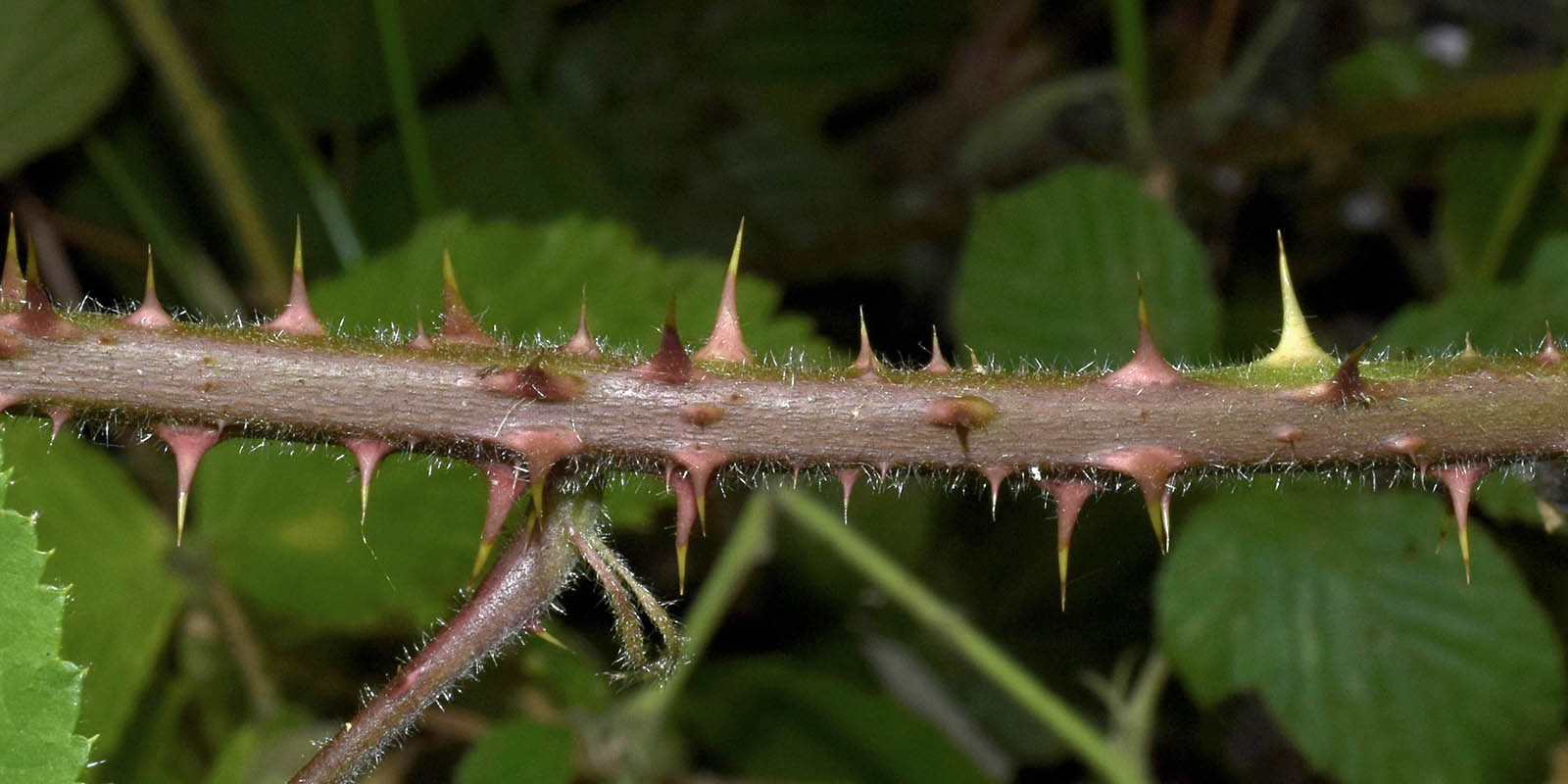

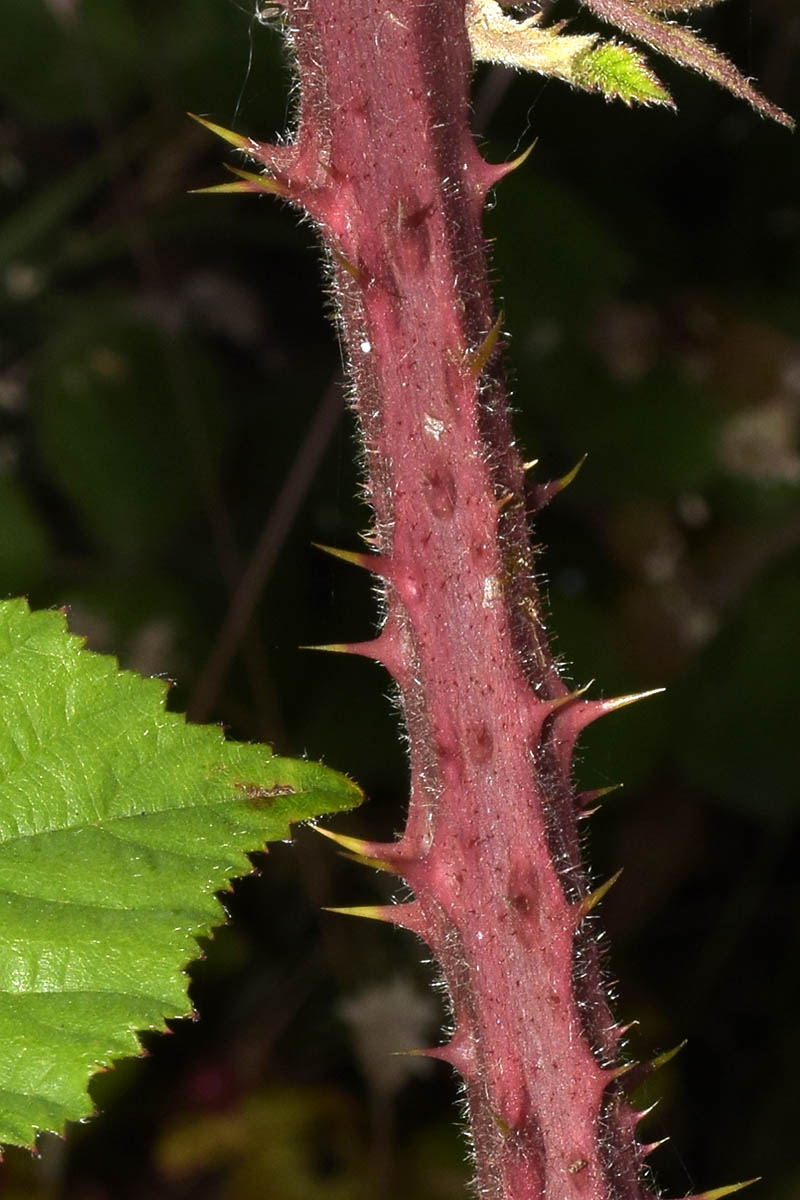
A shade stem with weak armature.
